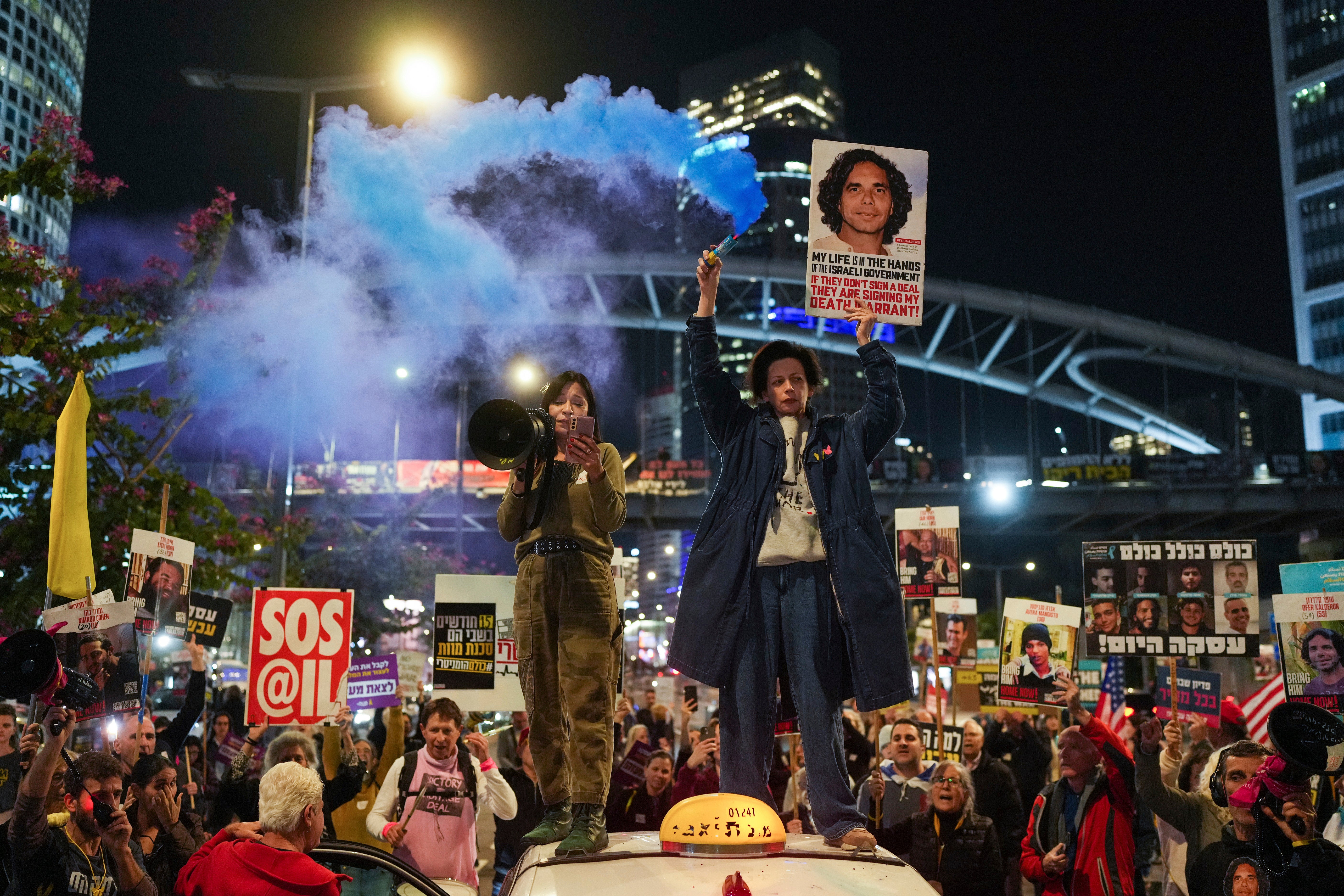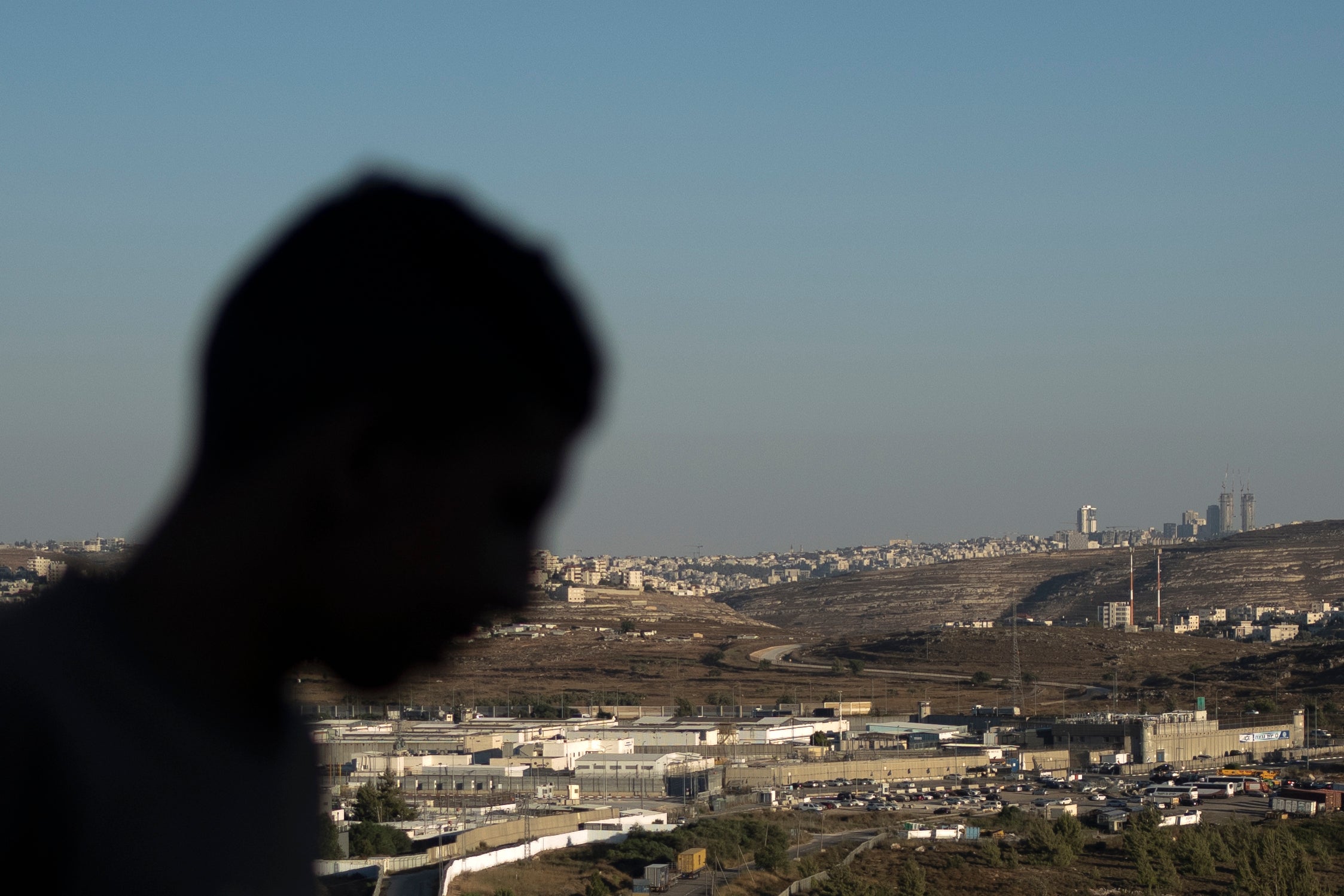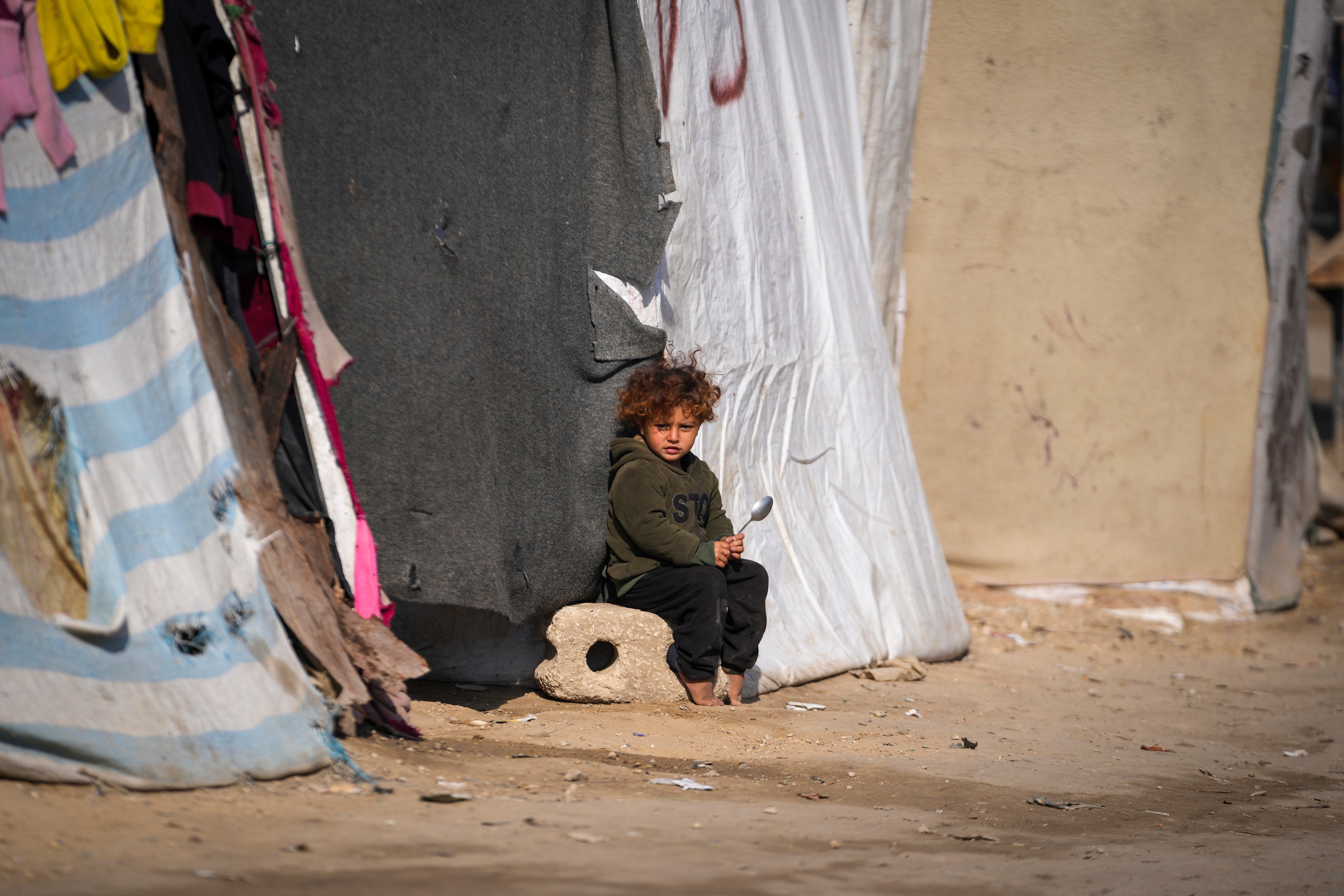A ceasefire agreement between Israel and the Palestinian militant group Hamas is expected to come into effect at 8.30am local time on Sunday, seeing the release dozens of hostages held in Gaza and hundreds of Palestinians imprisoned by Israel.
The long-fought-for deal, divided into three phases of 42 days each, was approved by the Israeli cabinet with a majority of 24 ministers in favour and eight against in the early hours of Saturday morning.
Many hope it will bring an end to the devastating 15-month conflict, which has claimed the lives of over 46,000 Palestinians in Gaza and more than 1,000 Israelis.
However, sources close to the negotiations, along with families of hostages whose loved ones are not on the initial release list, have expressed concern that while the first stage may succeed, the second and third phases are not guaranteed.
Far-right members of Benjamin Netanyahu’s coalition consider it only a temporary ceasefire and have threatened to bring down his government if he makes too many concessions.
What should we expect in the coming days?
Hostage releases
According to the plan, while the ceasefire will begin at 8.30am on Sunday, the actual exchange will start at 4pm the same day, with hostages being released and then Palestinian prisoners.
In the first phase, 33 hostages taken from Israel – the youngest, women including five Israeli soldiers, the elderly, and the sick – are expected to be released. Hamas has agreed to free three female hostages on day 1 of the deal, four on day 7, and the remaining 26 over the following five weeks.
However, the fate of some of these hostages remains uncertain, as Israeli media has reported that as many as eight of the 33 may be dead. Among the leaked lists of those due to be released is British-Israeli citizen Emily Damari, 28, who was seized from kibbutz Kfar Aza. According to her mother she was shot and suffered shrapnel wounds when she was taken.
Also slated to be released is Kfir Bibas, who was just eight months old when abducted on 7 October and turned two on Saturday. Hamas had previously reported in November 2023 that Kfir, his five-year-old brother and mother were killed in an Israeli airstrike, but there is no independent verification of this.
The hostages are expected to be transported by the Red Cross through Egypt and then on to Israel. Authorities have prepared six hospitals to receive them, with two in the south of the country designated for the most critically injured.
Professor Hagai Levine, head of the health team representing the hostages’ families, said on Saturday that teams were prepared to deal with “multi-dimensional and multi-systemic” injuries.
These include cardiovascular issues, brain, kidney and liver damage, severe weight loss, post-traumatic stress, eyesight problems, and respiratory damage from the lack of oxygen and light in underground tunnels. As part of preparations to treat them, medical experts have interviewed previously released hostages, analysed videos released by Hamas, and worked with intelligence services.
“We don’t really know how they will arrive,” Professor Levine said, adding that they have endured “unbelievably hellish conditions.”

Palestinian prisoners freed
In phase one, around 1,900 Palestinian prisoners are expected to be released, just over 1,100 of them residents of Gaza who were held by Israel but were not involved in the 7 October attacks. Israel has agreed to free all women and children under 19 from Gaza during this phase.
So far we only know the identities of 734 Palestinian prisoners slated for release, as published by the Israeli Ministry of Justice on Sunday morning. Among them, The Independent counted around 25 minors (the youngest being 16 years old) and 69 women, including Khalida Jarrar, a 62-year-old member of the Palestinian Legislative Council, representing the Popular Front for the Liberation of Palestine (PFLP).
She was arrested in December 2023 and held in administrative detention – a practice criticised by the United Nations as potentially amounting to arbitrary detention. The PFLP is designated as a terrorist organisation by the US and also the European Union.
Other prominent names include Zakaria Zubeidi, the former commander of the Al-Aqsa Martyrs Brigades, who escaped from a high-security Israeli detention facility in 2021, and Nael al-Barghouti, a Hamas member from the occupied West Bank and the longest-serving Palestinian prisoner, jailed for over 40 years – two-thirds of his life.
Hassan Qunaita, head of the Gaza Commission of Detainees and Ex-Detainees Affairs, told The Independent they were concerned about the thousands more arrested from Gaza and held incommunicado in Israel who are not on the list. He estimated that 5,000 people, including many medics, had been detained from Gaza since 7 October and alleged ill-treatment including torture – something Israel denies.

Humanitarian aid and movement in Gaza
As part of the deal, Israel has committed to immediately increasing much-needed humanitarian aid to Gaza, which is in the grips of an unprecedented humanitarian crisis and has experienced famine.
Israel has agreed to allow the entry of 600 food trucks a day – a significant increase. For context, Oxfam reported that during a two-and-a-half-month period in late 2023, only 12 aid trucks reached northern Gaza, the area most heavily bombarded.
According to leaked versions of the deal, rehabilitation and reconstruction of electricity, water, sewage, communications and roads will begin across Gaza during the first stage. Israel has also agreed to allow equipment necessary for civil defence and rubble removal.
Also in the agreement, some of the 1.9 million displaced Palestinians will be allowed to return home, provided they do not carry weapons with them. However, with 80 per cent of Gaza destroyed, according to the United Nations, many have no homes to return to.
Israel has committed to sending 60,000 temporary homes (caravans) and 200,000 tents in the deal. Mahmoud Basal, part of Gaza’s civil defence, told The Independent the caravans were “extremely urgent”, as families could no longer survive in tents, and Gaza lacked the proper equipment for clearing rubble.

Withdrawal and security
During the first phase, Israeli troops will withdraw into a buffer zone about 1km wide inside Gaza, along its borders with Israel, and remove their forces from populated cities.
The BBC, citing a senior Palestinian official involved in the Doha negotiations, reported that Hamas police will operate in their official blue uniforms within designated areas of Gaza once the ceasefire takes effect.
Their role will include managing the movement of displaced individuals from southern to northern Gaza after Israeli forces withdraw.
Hamas police personnel will refrain from carrying weapons except when absolutely necessary, with Qatar and Egypt mediating to prevent potential conflicts.







